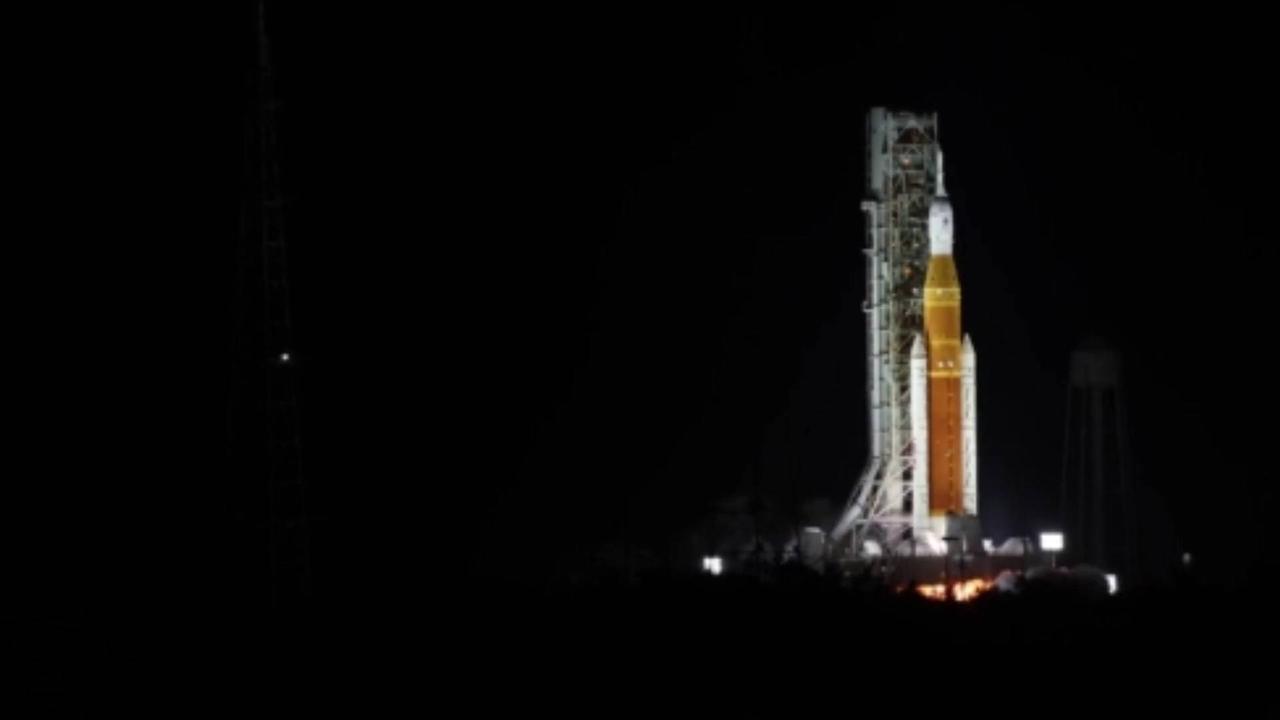NASA Launch Pad Damaged During Artemis Launch Mission

NASA Launch Pad Damaged During Artemis Launch Mission
NASA Launch Pad, Damaged During , Artemis Launch Mission.
The Byte reports NASA's Artemis 1 launch pad suffered more damage than anticipated when the rocket took off from Kennedy Space Center last week.
Reuters originally reported that a source within the space agency said the damage "exceeded mission management expectations.".
Reuters originally reported that a source within the space agency said the damage "exceeded mission management expectations.".
On November 18, NASA released a statement saying that launchpad elevators were not working after a "pressure wave" blew off the blast doors.
Shortly after Artemis 1 launched, NASA acknowledged that debris was seen falling off the rocket, but maintained it caused "no additional risk" to the mission.
Shortly after Artemis 1 launched, NASA acknowledged that debris was seen falling off the rocket, but maintained it caused "no additional risk" to the mission.
The Byte reports that preliminary reports of extensive damage might explain why NASA prevented reporters from photographing the launch tower.
The launch of Artemis 1 has been plagued by years of setbacks.
.
The Space Launch System (SLS), which would eventually boost it into space, faced a series of delays throughout its development.
The Space Launch System (SLS), which would eventually boost it into space, faced a series of delays throughout its development.
Just prior to the launch, the Artemis 1 spacecraft was damaged by Hurricane Nicole while sitting on the launch pad.
.
Just prior to the launch, the Artemis 1 spacecraft was damaged by Hurricane Nicole while sitting on the launch pad.
.
According to The Byte, the lingering question now is whether the damage the launch pad sustained will affect future launches of the SLS.
.
According to The Byte, the lingering question now is whether the damage the launch pad sustained will affect future launches of the SLS.


![SpaceX rescue mission to bring stranded astronauts back to Earth docks at ISS [Video]](https://video.newsserve.net/300/v/20240930/1388899152-SpaceX-rescue-mission-to-bring-stranded-astronauts-back.jpg)
![NASA's largest-ever planetary spacecraft is due to launch next month [Video]](https://video.newsserve.net/300/v/20240926/1388554564-NASA-largest-ever-planetary-spacecraft-is-due.jpg)
![NASA preparing mission to bring stranded Boeing Starliner astronauts back to Earth from ISS [Video]](https://video.newsserve.net/300/v/20240925/1388452794-NASA-preparing-mission-to-bring-stranded-Boeing-Starliner.jpg)
![Soyuz space capsule carries 2 Russians and 1 American back from International Space Station [Video]](https://video.newsserve.net/300/v/20240923/1388291010-Soyuz-space-capsule-carries-Russians-and.jpg)
![NASA prepares for third attempt at Artemis lunar rocket launch [Video]](https://video.newsserve.net/300/v/20221115/1668537456-NASA-prepares-for-third-attempt-at-Artemis-lunar.jpg)
![Artemis 1 mission’s launch to take place on Wednesday says NASA | Oneindia News *News [Video]](https://video.newsserve.net/300/v/20221115/1343608680-Artemis-mission-launch-to-take-place.jpg)
![Artemis 1 [Video]](https://video.newsserve.net/300/v/20221115/1343586794-Artemis.jpg)